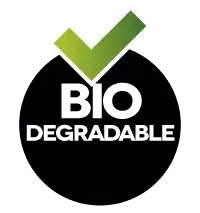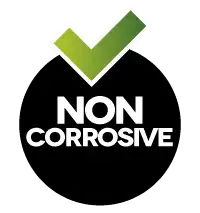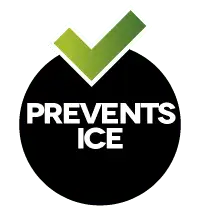
Eco-Friendly De-Icer for Sale Non-Toxic Ice Melt for Driveways & Walkways
Looking for an eco friendly de-icer that actually works? Discover EcoGrit’s non-toxic, pet- and plant-safe ice melt – perfect for UK driveways and walkways.
Keep Your plants Safe This Winter
Your garden life shouldn’t have to suffer the consequences of deicing your lawn.There’s many ice-melt substances on the market that can harm your plant life and ruin your gardens. Fortunately for you, we at EcoGrit have the perfect solution. A naturally derived, organic plant-safe de-icer! With options like ours, there’s no need for you to say goodbye to dying garden beds or lawns.
There are no hard options for a 100% landscape-safe de-icer, but there are some more than fair options. Traditional ice-melting products that claim to be safe for plants might contain ingredients like calcium chloride, while still being a salt, it is safer than other options.
EcoGrit is another excellent eco-friendly ice melter as it does not contain rock salt, urea or any other toxic chemicals that can destroy flora. Our product gently clears ice and frost from lawns, grass and flower beds to help protect plants from the effects of frost.
Yes and no. Snow isn’t good for plants in the sense that the weight of heavy snow on branches can break them. Also, chemicals used to melt snow and ice can be a detriment and a major problem for gardeners.

On the other hand, a blanket of snow can provide shelter from sub-zero temperatures and icy winds, helping new plant growth underneath. When the snow melts naturally it also helps maintain soil moisture. Ultimately, it can be seen as nature’s way of protecting the greenery in the winter months.
The best options for a plant-safe ice-melt are those that don’t contain urea or rock salt. Urea contains nitrates and can contaminate the soil with it if overused. Rock salt is sodium chloride and it can wreak havoc on vegetation as it mixes with surface water and negatively alters soil quality. The process of melting ice with rock salt displaces minerals that are essential for healthy plant growth.
Rock salt will affect and possibly kill any land foliage. This is because salt is a natural herbicide. When the ice melts, the rock salt will combine with the water and create a high saline (salt) soil, thus shifting the mineral content and, in turn, stunting plant growth.
If you are looking for a garden-safe de-icer that will clear the lawn, flower beds and any green areas around your house, then EcoGrit ticks all the boxes. The water produced by using our ice melter will enter the ecosystem harmlessly and with no ill effects.
EcoGrit’s range of ice melts and associated products, including shakers, spreaders and larger tubs for wider areas, are organic, naturally sourced and free from harmful chemicals that cause toxicity, including rock salt and urea. They are pet-friendly ice melts and readily available online, along with further information about keeping yourself, your loved ones and your four-legged friends safe this winter.

EcoGrit
The Saw Mill
Brooms Barn
Coney Weston
IP31 1HQ

Looking for an eco friendly de-icer that actually works? Discover EcoGrit’s non-toxic, pet- and plant-safe ice melt – perfect for UK driveways and walkways.
Discover how to stay ahead of winter weather with EcoGrit’s expert guidance on de-icing. Learn about our legal responsibilities and how you can keep your




Ingesting too much salt can be incredibly harmful to a cat or dog. Too much salt entering the body can cause blood sodium concentration to increase to a dangerous level, which damages the kidney and causes excessive thirst and lethargy.
Salt can be absorbed through skin and paws too, making it even riskier to use rock salt as a deicer in areas where dogs can reasonably be expected to walk. Additionally, some deicers are based on urea, or urea-derived ingredients, which are also toxic to pets coming into contact with them. Urea ingestion can lead to excessive salivation and irritation to the gastrointestinal tract.
Additionally, the combination of salt and melting ice can cause a heat reaction, meaning that a surface can become hot and uncomfortable to walk on with ‘bare paws’. Rather, the simple act of deicing a pavement with rock salt can cause burns to a pet’s delicate paws.
If a dog or cat’s paws feel painful or uncomfortable, they are more likely to lick them for some relief, which in turn transfers the offending products onto their lips, mouth and tongue and on into their digestive system, affecting the bloodstream and internal organs.
Given these risks, it is clear that great care must be taken when choosing a deicing product to use this winter. It is prudent for owners to check the labels of any commercially available products before buying them as they may still contain rock salt, but fewer quantities of it with rounded edges for a softer impact.
Nevertheless, salt remains a risk. So look for products stating that they do not contain any rock salt or urea whatsoever. Urea can also be known as carbonyl diamide or carbamide resin and is also used in many fertilizers as a source of nitrogen. Excess levels caused by ingesting urea, or absorbing it through the skin, can lead to blood and kidney problems in cats and dogs.
Other chemicals to steer clear of include chlorides, which can cause internal irritation and kidney issues in pets, calcium salts, which can lead to diarrhoea. Skin complaints and glycols, which are also a key ingredient of antifreeze and can be deadly to pets if eaten.
The aspects that make the ice melt safe for pets and concrete include a lack of salts, urea, chlorides and other harmful chemicals. The safest preventative solutions are those derived naturally from organic sources that do not work against your cats’ and dogs’ internal systems nor cause them irritation when they come into close contact.
Some examples include sand, grit, gravel and cat litter, which all offer excellent traction but do not speed up the ice melting. For the latter, there are specialist, pet-safe ice melter products on the market that are aimed at pet owners and that clear icy surfaces quickly and efficiently without causing any harm to concrete or other surfaces while posing no risk to animals or plant life.
A quick and easy way to reduce the risk and clear away dangerous snow, frost or ice is to spread grit of some form or another onto the road to add traction and help melt the ice so that it turns back into a liquid and runs safely off the surface into the gutters.
We would appreciate people to like and follow our social media streams to help spread the word, educate and enlighten others and help to start making a real difference.






EcoGrit is an environmentally conscious company that would like to serve the people by offering them education, insight, “peace of mind” and the chance to make a positive difference on a monumental scale at a time when winter weather patterns are becoming more unpredictable.
VAT (Value Added Tax) Number: 340 3662 26
Looking for an eco friendly de-icer that actually works? Discover EcoGrit’s non-toxic, pet- and plant-safe ice melt – perfect for UK driveways and walkways.
© 2023 EcoGrit Ltd